 |
|
The National Academy of Science Gulf Research Program recently announced the recipients of nine grants geared toward integrating or synthesizing existing data from different sources that, analyzed together, may provide additional insights, address important questions, or lead to new approaches to interpreting monitoring data. One of the projects funded, Synthesis of historical observations using novel model approaches to improve understanding and predictability of deep Gulf of Mexico circulation, will be lead by COAPS senior scientist Dr. Steve Morey. The project researchers plan to synthesize a mix of historical observations with new models to better understand the unique currents that flow through the deep Gulf. Findings are expected to improve forecasting methodologies critical for safe design and operation of offshore oil and gas infrastructure, as well as improve our predictive capabilities for the transport of deep water organisms and contaminants.
|
State climatologist David Zierden on Capitol Hill for El Niño "101"
On November 23, Florida state climatologist Dr. David Zierden was one of four scientists invited to a congressional briefing in Washington, DC where he provided background and explained the implications of the 2015-16 El Niño event. The four panelists discussed how El Niño forms, what impacts can be anticipated from the current event, as well as the opportunities and challenges in understanding, monitoring, and predicting the El Niño. Zierden stressed the importance of increasing the prediction accuracy for El Niño to better plan global and regional responses. In Florida, where the 1997-98 El Niño had severe impacts, water planners and farmers are preparing responses to expected impacts of this year's El Niño. The briefing highlighted the importance of continued investment in data assimilation, model improvement, and communication to stakeholders and decision makers to better predict and prepare for future El Niño events.
Read more.
|
|
Greenland freshwater pathways in the sub-Arctic Seas from model experiments with passive tracers
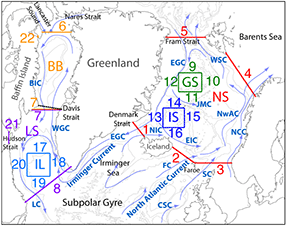 A research article in the Journal of Geophysical Research, Oceans details a series of numerical experiments using a passive tracer to track the spreading of Greenland freshwater. The experiments, conducted as a part of the Forum for Arctic Ocean Modeling and Observational Synthesis effort, were led by COAPS scientist Dr. Dmitry Dukhovskoy in order to investigate the fate, pathways, and propagation rate of Greenland meltwater in the sub-Arctic seas. The models show that Greenland freshwater propagates and accumulates in the sub-Arctic seas, although the models disagree on the amount of tracer propagation into the convective regions. Results highlight the differences in simulated physical mechanisms at play in different models and underscore the continued importance of intercomparison studies.The online version can be found at http://onlinelibrary.wiley.com/doi/10.1002/2015JC011290/full. A research article in the Journal of Geophysical Research, Oceans details a series of numerical experiments using a passive tracer to track the spreading of Greenland freshwater. The experiments, conducted as a part of the Forum for Arctic Ocean Modeling and Observational Synthesis effort, were led by COAPS scientist Dr. Dmitry Dukhovskoy in order to investigate the fate, pathways, and propagation rate of Greenland meltwater in the sub-Arctic seas. The models show that Greenland freshwater propagates and accumulates in the sub-Arctic seas, although the models disagree on the amount of tracer propagation into the convective regions. Results highlight the differences in simulated physical mechanisms at play in different models and underscore the continued importance of intercomparison studies.The online version can be found at http://onlinelibrary.wiley.com/doi/10.1002/2015JC011290/full.
|
|
Activities & Achievements
|
 Showcasing a new way to quantify hurricanes
Showcasing a new way to quantify hurricanes
Inventors and innovators from FSU, FAMU and TCC participated in the 2015 Discovery on Parade, which was held at the Turnbull Florida State Conference Center in Tallahassee. COAPS senior scientist
Dr. Vasu Misra and COAPS alum Michael Kozar showcased the Integrated Kinetic Energy (IKE) index -- a new way to quantify "how big and how bad" a hurricane really is. In comparison to the Saffir-Simpson scale, which is based on a one-minute average sustained wind speed measured at a single location of the tropical cyclone (a variable that is barely observed outside of the given location and instant), IKE takes into account the size and distribution of wind around the center of the tropical cyclone. This makes it possible to estimate the size of the tropical cyclone from the forecast of IKE.
Learn more about
the IKE index.
Congratulations!
 Congratulations to
Olmo Zavala-Romero who completed his PhD in Scientific Computing in December. While at COAPS, he developed the
Deep-C Gulf of Mexico Map Viewer,
a WebGIS site that displays daily outputs of the ocean model HYCOM as well as data collected by Deep-C scientists.
|
COAPS' Marine Data Center hosts delegation from Korea
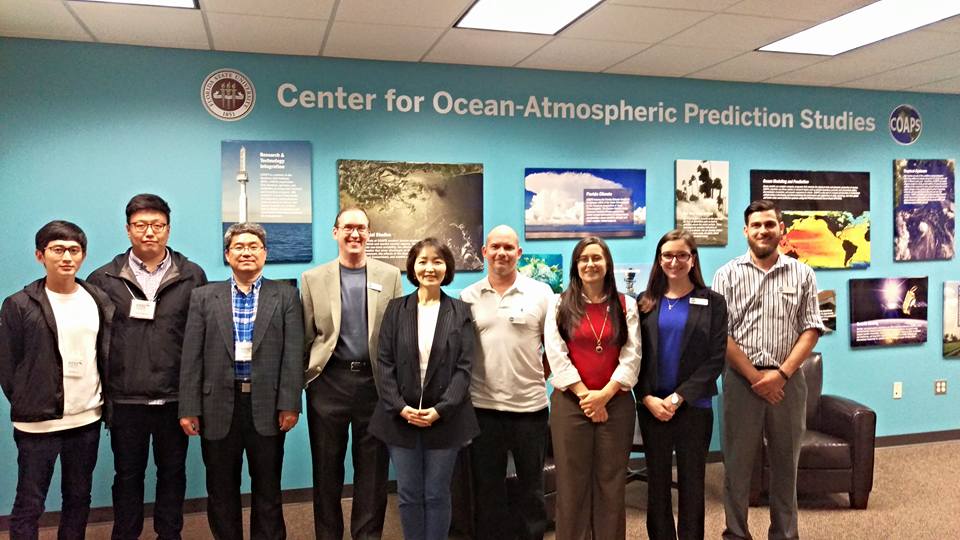
The Marine Data Center at COAPS welcomed a delegation from the Korean Institute of Ocean Science and Technology (
KIOST) in December to facilitate an exchange of technical ideas pertaining to
the SAMOS initiative. SAMOS provides routine access to accurate, high-quality marine meteorological and near-surface oceanographic observations from research vessels and select voluntary observing ships. KIOST is exploring development of a shipboard data management system and is considering modelling it after the SAMOS project. COAPS looks forward to future collaborations with KIOST on marine data management.
Dr. Ekaterina (Kat) Maksimova received a Postdoc
toral Sc
holars Career Develop
ment Travel Award from the FSU Office of Postdocto
ral Af
fairs. She will be presenting her current research at the American Geophysical Union Fall Meeting in
 San
Francis
co in December. She will also attend the Honors Ceremony and Banquet with her former Ph.D. advisor, EOAS Professor and AGU
fellow Dr. Allan Clarke.
San
Francis
co in December. She will also attend the Honors Ceremony and Banquet with her former Ph.D. advisor, EOAS Professor and AGU
fellow Dr. Allan Clarke.
|
|
|
Students Get a "Birds Eye View" of Earth and Ocean Science
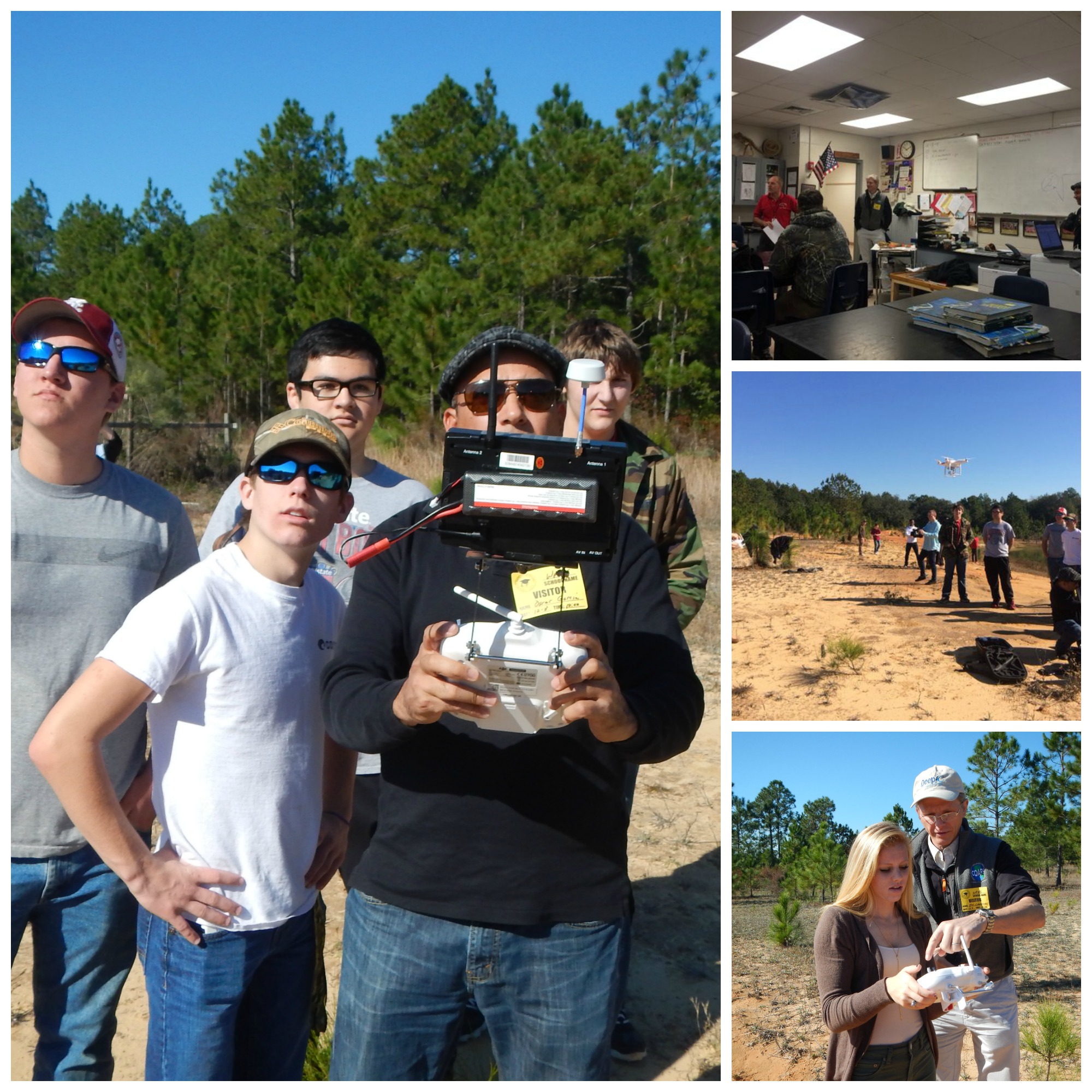 COAPS Director
Dr. Eric Chassignet and Dr. Oscar Garcia-Pineda were in Pensacola last month at the West Florida High School of Advanced Technology to talk about
how technology is being used in ocean and atmospheric science. The visit with Shawn Walker's marine science students included a discussion of the oil spill research conducted by the Deep-C Consortium, as well as a drone demonstration. While the demo was purely for fun, it was a great opportunity to show how recent advancements in low cost drone technology are revolutionizing aerial monitoring platforms for scientific observations.
|
|
ROV Maker Day Educates and Inspires
 Students at Tallahassee's Cornerstone Learning Center built and tested their own underwater robots as part of an education/outreach event co-sponsored by COAPS and the Dauphin Island Sea Lab. The program is intended to increase understanding and appreciation for science and the marine environment by directly involving students in that environment with dynamic, hands-on activities. Innovative activities such as the ROV Maker Day help to instill in students some level of the wonder and awe we feel in discovery. Students at Tallahassee's Cornerstone Learning Center built and tested their own underwater robots as part of an education/outreach event co-sponsored by COAPS and the Dauphin Island Sea Lab. The program is intended to increase understanding and appreciation for science and the marine environment by directly involving students in that environment with dynamic, hands-on activities. Innovative activities such as the ROV Maker Day help to instill in students some level of the wonder and awe we feel in discovery.
|
|
Sharing "lessons learned" from recent oil spill research at the 2015 FCR-STEM Conference
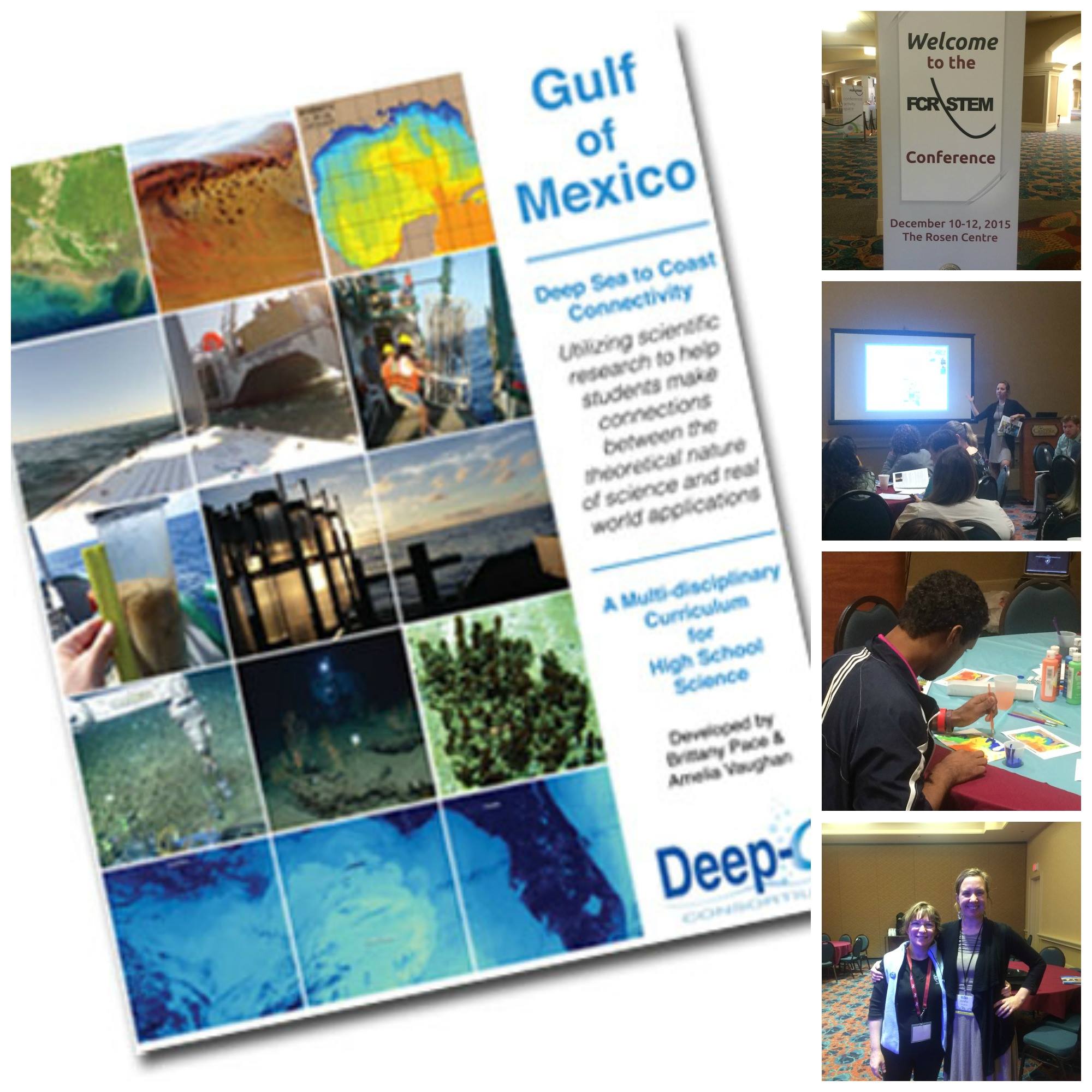
The FCR-STEM Conference in Orlando was a wonderful opportunity to share the Deep-C Gulf of Mexico Curriculum with teachers looking for ways to introduce students to real-world applications of science as well as examples of environmental disasters - their impacts on ocean ecosystems as well as nature's ability to and mechanisms for recovering from such events. The curriculum can be found at: http://deep-c.org/education-and-outreach/gom-curriculum.
"What I wish I knew about academia"
A Woman's Perspective
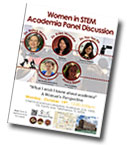 Dr. Kat Maskimova participated in a panel discussion geared toward undergraduates and grad students in STEM fields. The event was sponsored by FSU, FSU Student Government, Graduate Women in Science, and the FSU Congress of Graduate Students. Dr. Kat Maskimova participated in a panel discussion geared toward undergraduates and grad students in STEM fields. The event was sponsored by FSU, FSU Student Government, Graduate Women in Science, and the FSU Congress of Graduate Students.
|
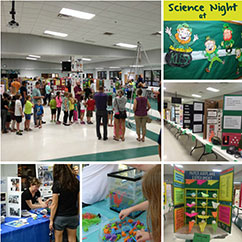
"Science Night"at Killearn Lakes Elementary School
We had a great time at Killearn Lakes Elementary School's Science night, teaching students about ocean science through interactive activities. And hats off to all of the KLES students who entered the Science Fair earlier in the day. So many amazing projects by a talented group of future scientists!
Hands-on learning about weather
Many thanks to the Taylor County Extension for inviting us to share with local 4H youth. Assistant state climatologist Melissa Griffin presented to a large group of home-schoolers (kids and parents) interested in learning about weather.
The Florida Climate Center at COAPS is committed to educating the public about meteorology, climatology and physical oceanography.

|
|
|
Recent Publications
COAPS authors are in bold.
|
Campagnolo, M.L.,
Q. Sun,
Y. Liu, C. Schaaf, Z. Wang, M.O. Román, 2016.
Estimating the effective spatial resolution of the operational BRDF, albedo, and nadir reflectance products from MODIS and VIIRS,
Remote Sensing of Environment, Volume 175, 15 March 2016, pp.52-64, ISSN 0034-4257
Conroy, B.J., D.K. Steinberg, M.R. Stukel, J. Goes, V. Coles, 2016. Meso- and
microzooplankton grazing in the Amazon River plume and western tropical North Atlantic. in press.
Dukhovskoy
, D.S., P.G. Myers, G. Platov, M.-L. Timmermans, B. Curry, A. Proshutinsky, J.L. Bamber, E. Chassignet, X. Hu, C.M. Lee, R. Somavilla, 2016.
Greenland freshwater pathways in the sub-Arctic Seas from model experiments with passive tracers
.
Journal of Geophysical Research, online, doi:10.1002/2015JC011290
Lu, J., F. Wang, H. Liu, and P. Liu, 2016. Stationary Mesoscale Eddies, Up-gradient Eddy Fluxes and the Anisotropy of Eddy Diffusivity. Geophysical Research Letters, doi: 10.1002/2015GL067384
Liu, B., T. Zhou, and J. Lu, 2015. Quantifying contributions of model processes to the surface temperature bias in FGOALS-g2. Journal of Advances in Modeling Earth Systems, doi: 10.1002/2015MS000459
Lu, J., 2016. On "Some Fundamental Problems of the General Circulation of the Atmosphere". Chinese Journal of Atmospheric Sciences, 40:78-85.doi:10.3878/ j.issn.1006-9895.1505.15140 (in Chinese with abstract in English)
Smith, S.R.,
K. Briggs, N. Lopez, and V. Kourafalou, 2015. Numerical model evaluation using automated underway ship observations. Journal of Atmospheric Oceanic Technology, in press.
Stukel, M.R., M. Kahru, C. R. Benitez-Nelson, M. Décima, R. Goericke, M.R. Landry, M.D. Ohman, 2015. Using Lagrangian-based process studies to test satellite algorithms of carbon flux in the eastern North Pacific Ocean. Journal of Geophysical Research: Oceans. doi: 10.1002/2015JC011264
Stukel, M.R., C.R. Benitez-Nelson, M. Décima, A.G. Taylor, C. Buchwald, M.R. Landry, 2016. The biological pump in the Costa Rica Dome: An open ocean upwelling system with high new production and low export. Journal of Plankton Research, in press.
Thoppil, P.G., E.J. Metzger, H.E. Hurlburt, O.M. Smedstad, H. Ichikawa, 2016. The current system east of the Ryukyu Islands as revealed by a global ocean reanalysis, Progress in Oceanography, Available online, ISSN 0079-6611, http://dx.doi.org/10.1016/j.pocean.2015.12.013.
Vasubandhu, M., D. Groenen, A. Bharadwaj, and A. Mishra, 2016. The warm pool variability of the tropical northeast Pacific. International Journal of Climatology, accepted.
|
|